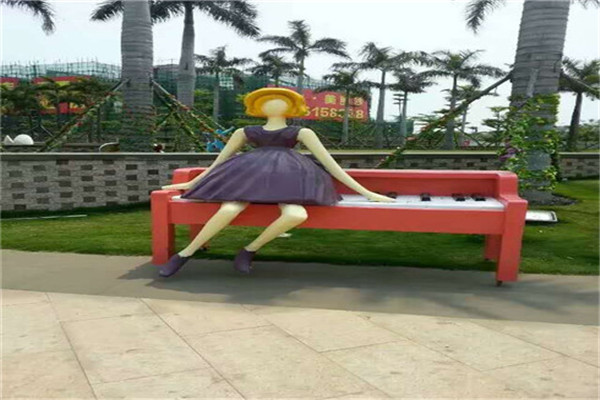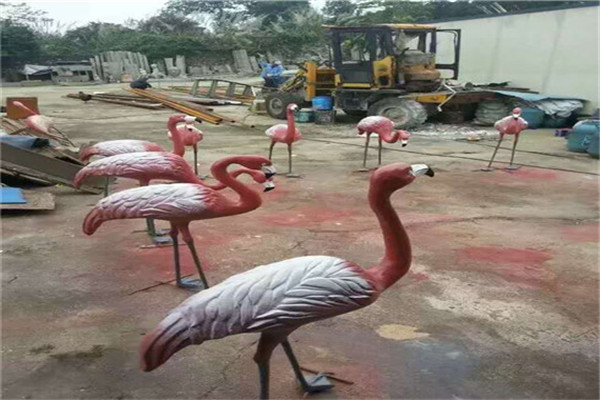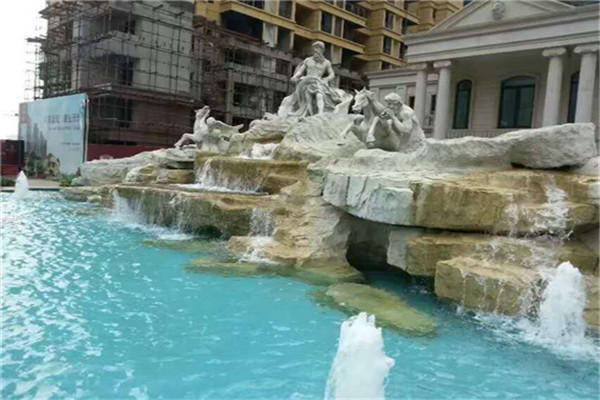
The rapid development of urban sculpture has increasingly become an important part of environmental art and the expression of urban image. Sculpture materials are mostly natural stone, artificial stone, wood, metal, cement and new materials such as plastic, rubber, stainless steel, aluminum alloy, gold copper, glass fiber reinforced plastic, etc. In order to cater to the trend of people's "returning to nature", break through the stereotype of traditional sculpture "steel and cement", enrich the environmental space, better protect and beautify the environment, reflect the meaning of sculpture, and make the urban landscape more attractive and cultural and artistic taste, "green sculpture" came into being at the historic moment, quietly sweeping all countries in the world. It refers to the artistic image with different postures and vivid charm, which is carefully cultivated and pruned by various green plants, especially trees. It combines garden and sculpture art, skillfully integrates the theme of "people, animals and nature" into beautifying the urban environment, and has a wonderful effect of shaping a beautiful image of the city and protecting the urban environment. The green sculptures are generally novel in design and rich in meaning. The overall style is beautiful and grand, full of modern flavor. Green sculptures are not only rich in materials, but also can release oxygen needed by human beings, absorb carbon dioxide, purify air, regulate air humidity, and bring health and artistic enjoyment to the city.

The types of stone inscription monuments include monuments, memorial monuments, merit monuments, temple monuments, Dianzi monuments, mausoleum monuments, etc. Except for a few wordless steles, they are generally literal steles. Usually, characters are carved on the body of the stele, and some are accompanied by carved patterns. The pedestal and cover of the stele are mostly carved with decorations, birds, animals, flowers, and mascots. The cover of the stele of the imperial family is also carved with dragons and phoenixes. Marble is the most commonly used stone for making the stele, and sandstone and granite are also commonly used. Some of the steles are huge, and some of them become a group of steles. Stone books are written with stone instead of paper, and carved instead of pen, which is very ingenious. There are many famous works of stone tablet processing and stone calligraphy carving. For example, "Xi'an Forest of Steles" includes more than 3000 historical steles from Han Dynasty to Qing Dynasty. It is the largest collection of stone books in China. Together with the "Forest of Steles in Hanlin" under construction in Kaifeng, it can be said that it is a sea of steles, and it is a collection of calligraphies of regular script, line, grass, seal script, clerical script and Wei style by famous calligraphers of all ages. In addition to large-scale carvings such as stele books and cliff carvings, there are also some stone carvings, such as mourning volumes in imperial tombs and modern fine carved small stone books, such as more than 100 mourning volumes of white marble excavated in the tomb of the prince of the Tang Dynasty, and six stone books of "Thirty six Strategies" carved in tile slate in modern Chengdu, a total of 26 pages and 1278 words, bound into a volume with eyeliner, each page is 2.2.6mm, which can be read.

Root carving is to create artistic works of characters, animals, utensils and other artistic images through conception, artistic processing and process, taking the autogenetic form and distorted form of tree roots (including tree bodies, nodules, bamboo roots, etc.) as the object of artistic creation. Kunming EPS decorative materials Root carving art is a kind of plastic art that discovers natural beauty and shows creative processing. The so-called "three parts of labor, seven parts of nature" means that in the creation of root carving, most of the natural forms of root materials should be used to express artistic images, and a few of them should be artificially processed and modified. Therefore, root carving is also called "root art" or "root art". The basic technique of root carving is to use exaggeration, fantasy and abstraction to reflect real life. To be specific, it is to make a comprehensive and careful observation of the selected root material and make a clever idea. By virtue of its shape, texture, knots, concavity and convexity, curvature, holes, and so on, it is a bold idea to combine the virtual with the real. recommend EPS decorative materials The line seeks the usable value of the material itself with a variety of themes and contents, and is good at finding the extraordinary from the ordinary, and gradually determines the overall image of the creation. It is very important to make clear the creative idea and imagine boldly for the root generation creation.

Copper casting is an important part of Chinese traditional culture and art. Copper casting has a long history and mature technology. The process of casting copper is more complicated than that of forging copper, and the artistic creation has a good recovery. Therefore, it is suitable for becoming the material of fine works and is very popular with artists, especially figure sculpture. But it is easy to oxidize, so pay more attention to maintenance. Each cast copper artwork is made through 11 complex and rigorous processes, which include traces of traditional handicrafts, lines and modern technology of precision casting. Cast copper is put into the sintering furnace and sintered at 1000 ℃ - 1150 ℃ according to different metal materials. The copper liquid is immediately cast into the ceramic shell. After cooling, the outer ceramic shell is broken, and the copper product rough embryo is peeled out.

Button carving refers to the carving of the buttons on the upper part of the seal. It belongs to the category of round carving and has a rich three-dimensional sense. However, compared with round carving, it has three significant characteristics. First, the image is small, limited to the size of the seal, which is generally less than 10 cubic centimeters; The second is to show only the upper part of the object, rather than the round sculpture, which needs all-round performance; In addition, the performance content of button carving is mostly animals, especially animals in ancient legends, such as chi, lion, dragon, tiger, exorcism, taotie, etc. Therefore, button carving is also called "animal button". The history of button carving is linked with seals. Only seals can make buttons. According to relevant historical research, the earliest seal started in the Zhou Dynasty, more than 3000 years ago. The original seal is a symbol of power and status, and is a special item for princes, generals and ministers, and Dada dignitaries. The original seal button was also very simple and simple, just drilling a small hole on the top of the seal to wear strong ties for carrying, so the seal button is also called "seal nose". With the continuous development of history, a strict hierarchy has emerged in the materials and buttons of seals according to the different positions and official titles of users. For example, the official seal of the Qin Dynasty, in addition to using gold, silver, copper and other materials to distinguish the level of the official seal, also distinguishes the decoration of the button. In the Han Dynasty, the emperor used tiger buttons with jade seals, the crown prince, the lieutenants, the prime minister, the lieutenant, the sangong and the left and right generals used gold seal tortoise buttons, and the officials of Dai Lu with two thousand stones used bronze seal elephant buttons Since then, the buttons used by all dynasties, from the monarch down to the officials of various products, were mostly chi, lion, dragon, phoenix, tiger, exorcism, taotie, unicorn, camel, bird, claw, bear, bat and other animals in the zodiac, depending on their positions.





